Future of Tournament Series Perspectives from Pro Anglers
Nov 30th, 2009 by OutdoorsFIRST
Modified Nov 30th, 2009 at 12:00 AM
Walleye First Article
Future of Tournament Series
Perspectives from Pro Anglers
By Jim Kalkofen
Pro Anglers Assess the Future
The current state of affairs with sponsors significantly reducing commitments to individuals and tournament circuits, the economy dragging on every aspect of the tackle and marine industries, pros making decisions about fishing or not fishing based on their personal finances and job responsibilities, and the high cost of competitive fishing are factors forcing hard decisions by many pro anglers. It may be the reason some of the top-level circuits are seeing participation declines. And, why some of the regional and state circuits and the “stand-alone” events are growing.
This article deals with the perspectives from the pro anglers. They recognize the same problem as most observers, but are willing to continue supporting the tours that allowed them to succeed in the past. Professional anglers may be the primary beneficiaries of respectable tournament payouts. However, they know how important it is to gain publicity and sell products for their sponsors. They also offer suggestions for the future while analyzing today’s circumstances.
Successful touring pro Scott Fairbairn, Hager City, WI, who parked his boat and retired from competitive fishing to pursue MBA studies in the summer of 2009, examined the situation from the business side of the issue. “Complaining or blaming won’t benefit anybody, because there’s no single entity to point to,” he said. “The tournament industry is in a classic negative-feedback loop. So many things are tied together; any one piece would be solvable, but the whole is much tougher.”
Those pieces, in no particular order of importance include:
1. Declining sponsorships making it tough for anglers to cover costs.
2. Falling payouts
3. The opportunity for media coverage has been significantly reduced, making it nearly impossible for pros to assure sponsors of meaningful exposure.
4. The media is extremely fragmented.
5. Industry interest in walleye fishing appears to be reduced.
6. Industry consolidation limits choices for anglers to secure meaningful “deals.”
7. Expenses are rising (travel, entry fees, boats, etc.).
8. Lack of family support (the family needs a “for-sure income producer”).
9. Key anglers are departing – the ambassadors who get others involved.
10. Tournament regulations have become more restrictive, eliminating the best periods to fish.
11 .Slot limits don’t showcase angler’s skills or the water being fished.
12. The learning curve has been flattening as the sport matures. Previously the news and media coverage was so good that if an angler could read, he could become educated, produce on tour and advance quickly.
13. The skill levels have equalized among anglers.
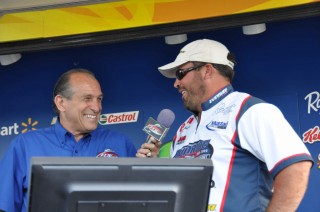 |
|
|
Scott Fairbairn
|
Fairbairn urged those within the walleye tournament business to recognize the points on the negative-feedback loop, and said, “With a concerted effort by all concerned, these issues can be overcome.” He recalled that the bass fishing sport faced the same issues, pulled back, addressed the issues, came out the “other end,” and charged ahead in the right direction.
Multiple walleye tournament winner Perry Good, Brainerd, MN, hopes the tournaments come back, but he said, “To me, it seems like we’re back in 1989 and starting over again. I feel fortunate to have lived through the boom in tournament fishing.” He said the AIM catch-record-release format is the best concept in recent years, and hopes this tour will really take off. But, he also offered this opinion, “I do think the future is artificials-only, even though I’m a live bait rigger.”
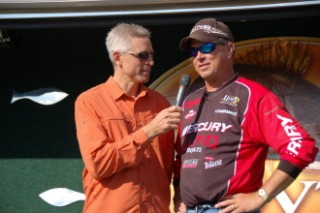 |
|
|
Lund Pro Perry Good
|
Most companies are on hold, he said, and need to sell more boats. They also have many marketing needs and reduced budgets to spend on tournaments and to attract the younger crowd into fishing and encouraging more people to get outdoors.
Hanging up his tour card prior to the 2009 season, Daryl Christensen, Montello, WI, said he had a great career and would still be guiding out of a 16-foot boat with a 25-hp tiller if not for walleye tournaments. “It was fun to be involved, especially looking back at the tactics, boats, outboards, electronics, resource improvement and gear that came out of competitive fishing over the past 20-plus years. I had a great career, won some, missed a few and reached many of my goals. It’s an individual sport and you have to work hard to survive. Now, I’ve found it’s like the NFL — you’re a pro until you die.”
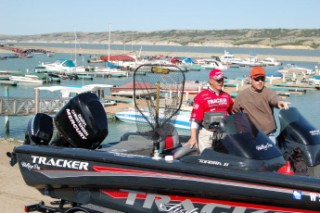 |
|
|
Daryl Christensen
|
Still promoting, writing and speaking, Christensen said if he was younger, he’d jump into tournament walleye fishing once again. “Anglers will fish despite reduced sponsor compensation, but on a smaller scale,” he said. “Many of us will fish charity events and work as hard for a rod and reel as for $100,000. It’s the mentality.” He also sees the growth of big, individual events, maybe with large non-industry sponsors. “The pros are out there, it’s now up to the organizers to deliver events they’ll fish and that create big crowds or media and internet coverage that benefits sponsors,” he said. On a side-note, Christensen said he walked into the Bass Pro Shops store in Gurnee, Illinois a month ago, talked to pros selling products for their sponsors, and it sunk in, “Now, I’m just another guy in the aisles buying tackle.”
As one of the walleye fishing pioneers and the top rated pro angler in the Walleye First ranking, Gary Parsons, Glidden, WI, said, “This sport kept me alive for 25 years, even though it’s more work now. The future will be fine and tournaments will become more popular, with participation about the same as ever. What a lot of guys don’t realize is fishing the pro circuits is like achieving a college diploma.” He said with experience, credibility and knowledge, a pro angler can work with manufacturers, teaching the pubic via the rising force in the fishing marketplace – the internet.
Parsons said, “There are more opportunities to compete at all levels. With AIM being the only high-profile, high-payout circuit, and with the catch-record-release format, I urge anglers to fish some of these events.” He also feels team tournaments will rebound quickly because they’re fun to fish and as anglers learn, they will move up the ladder.
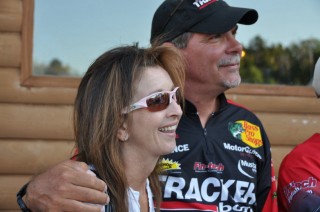 |
|
|
The Parsons
|
He compares today to the late 1980’s and early 1990’s. “It was difficult to secure sponsors back then, and is the same again. Now, I’m developing new relationships and exploring new opportunities. Selling yourself to sponsors has always been difficult, and is no different today,” the two-time PWT Angler of the Year with numerous tournament victories said.
Tournaments are a viable part of the future even though the waters are muddy, he said, and with changes occurring with payouts and entry fees, what may seem like dark-days ahead should be viewed as doors opening. “The grassroots sales results when a pro does well in tournaments and gets the word out without huge advertising investments is a model that’s been successful in the past, and with the internet, will continue to prove valuable in the future,” he said.
Another popular pro, a PWT Champion and FLW winner, Ted Takasaki, East Gull Lake, MN, said, “Competition pushes people past their comfort zone, and is the reason why tournaments have been and will be successful marketing tools.” He cited examples of how tournaments have helped Lindy Little Joe, the company he served as president for many years, and is now a sponsored pro on retainer for the company. He said this relationship is positive for both, because he didn’t want to move when PRADCO purchased Lindy and later moved to Arkansas.
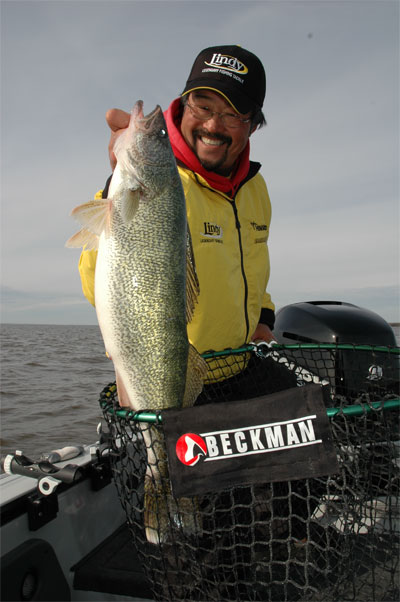 |
|
|
Ted Takasaki
|
1. Tournaments assisted Lindy by driving the market and getting more people involved in fishing.
2. Tournaments were instrumental in product development.
3. Tournaments led to immense product exposure.
4. Tournament taught new techniques and a better understanding of existing products.
“There’s no doubt tournaments play an important role for any fishing company.
They force anglers to try tactics and tackle they wouldn’t normally use. They led to the growth and expansion in bass and walleye fishing. Tournament anglers were directly responsible for boat design, rod and reel design and the products taken for granted by the everyday angler,” Takasaki said.
He said his approach to promotional duties will be three-fold. First, he will assist current sponsors in their promotions and in selling more products. Secondly, he will concentrate on multiple media outlets to showcase products. Third, he will fish competitively to gain as much exposure for his sponsors as possible. He will watch to see how FLW pans out, and said he will definitely look at AIM, and maybe fish some of both this season. “This is a difficult period with a pullback in all phases of the industry, but I’ve been around long enough to know things will eventually turn around.”
Winning both the MWC Team of the Year title and the World Walleye Championship in 2009 was definitely a career-builder for Matt Davis, Marion, Ohio and Dan Geis, Huron, Ohio. They have now added considerably to their normal 60-hour work weeks, as they develop the promotional side of the business, work non-stop on sponsors, take advantage of the many opportunities before them and respond to boat show and seminar requests. “We have verbally confirmed, but don’t have a signature yet on a big non-endemic sponsor, which will really make a difference,” Davis said.
He works as a production manager for a family-owned grain and livestock farm. Partner Geis works at a Ford Motor Co. parts plant. “Now, we have to balance family, work and our fishing careers, but after netting $40,000 in winnings, we have a bit more freedom,” Davis said. The team expects to fish the same number of events as in the past, the MWC eastern circuit and Spring Valley in the central. “We may even do Winnebago this summer, and continue our tradition of driving two trucks with our two boats to every event. We pre-fish separately, and spend more than most teams, but this additional practice time has really paid big-time for us,” Davis said. They also run four team club tournaments and one pro-am club event. He said it will be interesting to see where the future will take them.
Pat Neu, Forestville, WI, a long-time sales representative for fishing and hunting products, one of the organizers of AIM, and a winner on the major pro-am tours, has a unique focus on the walleye game. “For tournaments to work, they must create a marketing platform where sponsors get a return from their investment and today this is the internet. The numbers are growing and measurable,” he said. “This makes it immediate, like AIM on the web, and also entertains fans from the stage.”
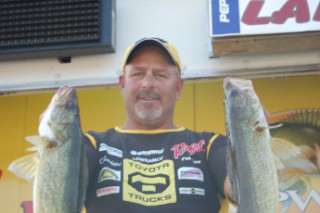 |
|
|
Pat Neu
|
Speaking of AIM, he said the potential for growth is very, very high. “It’s the correct platform now. The industry knew what we did by stepping out in 2009. They know CRR worked well, and the skepticism is gone,” he said. Neu is working on sponsorship sales for AIM, and said the industry reaction is very positive. “The reality is that the economy is being used as an excuse to cut marketing dollars from tournaments. The tackle and marine industry will do what they can to keep sales as strong as possible, but they’re leaving a great opportunity on the table,” Neu said.
 |
|
|
Anglers Insight Marketing
|
He is now developing relationships with non-endemic partners with cross-over consumers. Neu said the organization will create programs to benefit marketing partners. The tournaments that survive will need marketing partners to help defray tournament infrastructure costs and boost payouts. “Some industry leaders don’t understand how critical it is to keep tournaments strong and how important they are to their business,” he said. “Pro anglers were the creative juice that drove business for nearly two decades. Some of the new people don’t understand the growth in interest levels and sales results in those formative tournament years. He felt contingency programs like the Toyota program where the highest placing Toyota owner at each qualifying event earned a check would remain a positive influence among buyers.
Neu highlighted several components of tournament success:
1. Tournaments need to be available with low, medium and high entry fees.
2. Sponsored anglers have a responsibility to gain exposure and sell products, and they need circuits (and resultant media) to do that.
3. As AIM grows, it will give anglers the platform to accomplish number two.
4. FLW has made it difficult for sponsored anglers to achieve exposure because they eliminated the walleye tour TV coverage.
5. Anglers need opportunities to compete at low entry-fee local tournaments, which reduces travel costs and time-off work.
6. Circuits like MWS will do fine. These will help grow the industry, as information goes directly to the consumer, if the word can get out.
7. Smaller circuits are a value to individuals and sponsors.
8. Communication remains the vital link that ties all aspects of the tournament game together.
9. The willingness of anglers to support circuits is related to their return on investment. Is it worth their time?
10. Local and regional tournaments will continue because people love to compete.
In future stories, industry leaders will discuss their role in tournaments. What has occurred in the past? What about the future? How has the economy impacted today’s marketing efforts? They will offer recommendations for pro anglers and tournament directors. Anglers will voice their opinions (as always), but with thoughts about improving the tournament scene for all involved.
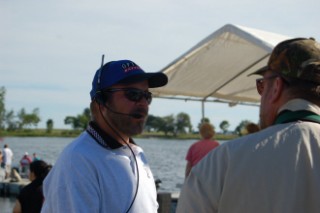 |
|
|
Jim Kalkofen
|